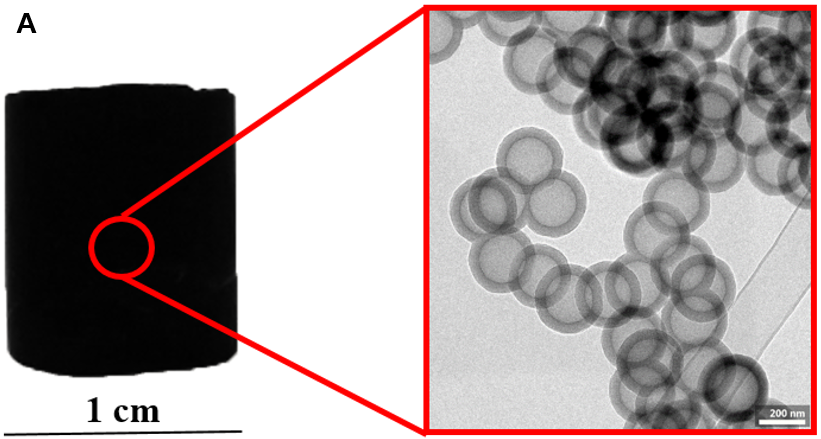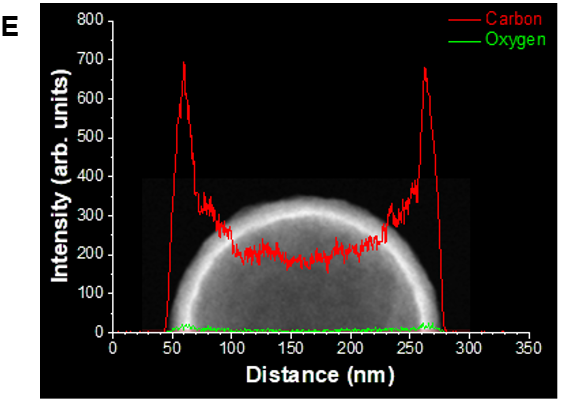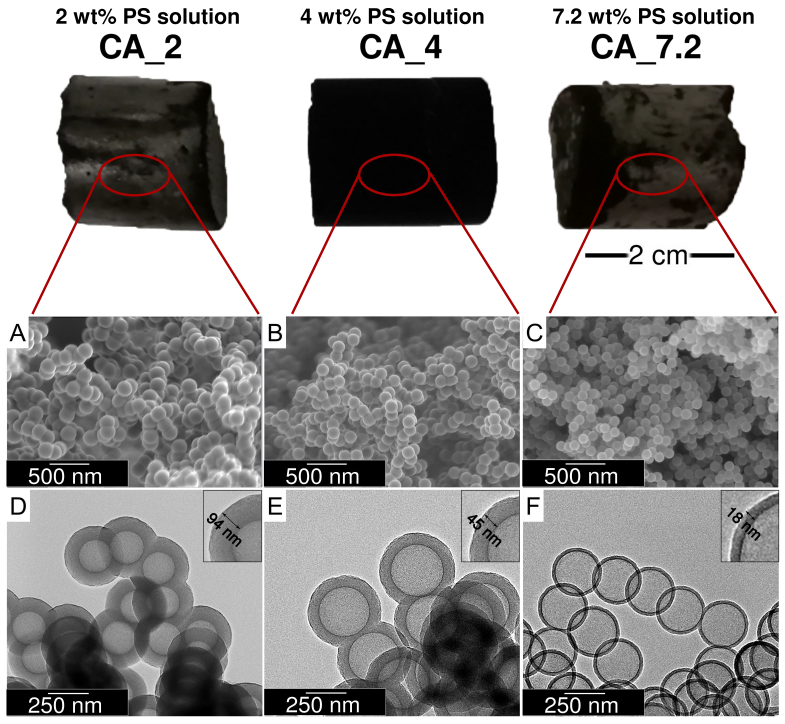Carbon Spherogels
Carbon spherogels are a specific form of a carbon aerogel: A monolithic, cylindrical body is solely composed out of hollow spheres with an extra ordinary high homogeneity over the whole sample.The TEM micropgraph in Fig. A depicts the uniformly sized hollow spheres as building units.
We use a colloidal polystyrene (PS) solution as templating agent for our resorcinol formaldehyde gelation. In Fig. B you can see a SEM image of these monodisperse, nanosized (200 nm) spheres.
The whole reaction scheme is depicted in Fig. C: first a sol is prepaired composed out of PS solution, resorcinol, formaldehyde, sodium carbonate and nitric acid for pH adjusting issues. Gelation and aging is performed in an oven at 80°C. Now we change the water against acetone, which is needed for subsequent supercritical drying with CO2. By use of supercritical drying we can avoid severe shrinkage effects and keep the high porosity of the monolith. The final carbon spherogel is achieved after carbonization under an argon atmosphere at 800°C.
4 TEM micrographs in Fig. D show our precise control and adjustment ability on the wall thickness of the hollow spheres: from sample A to D we decreased the PS concentation and observed and increase of the wall thickness stepwise from 15 nm to 70 nm. Worthwile to mention the uniformly sized Spheres in each sample.






